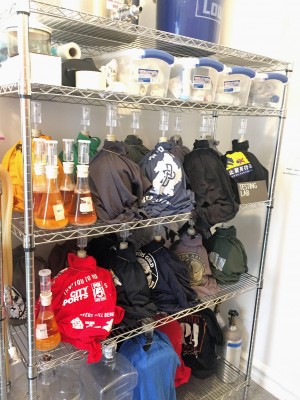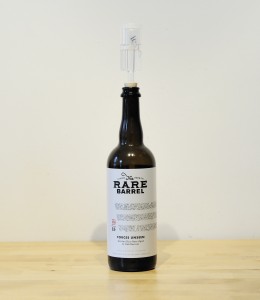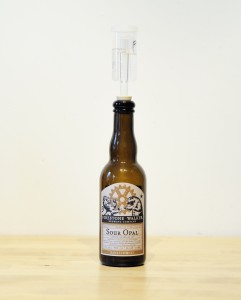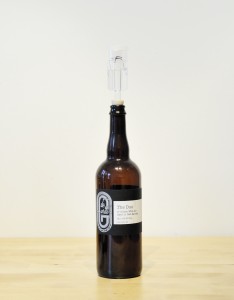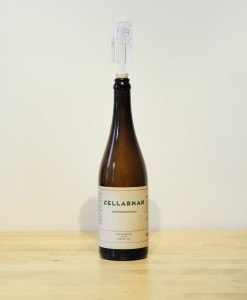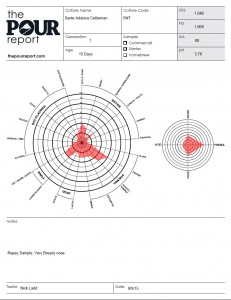It’s been well over a year since I started my bioreactor project. What started as a method to maintain a single ‘house’ mixed culture has grown into maintaining 3 separate and distinct mixed cultures. Each of these cultures is refreshed every 4 months by brewing a new 3-gallon batch of beer and splitting it into (3) 1-gallon jugs for each culture. In addition to the 1-gallon refreshes, with every refresh I grow up a separate large slurry of one of the cultures and pitch it into a larger 3-gallon test batch.
Over a year in, the first of the cultures, “Culture A” (I know, very creative) has begun to produce the first finished 1-gallon batches of beer. The recipe for this beer and review is below.
“Culture A” Provenance
“Culture A” started its life as bottle dregs grown up from the following commercial beers:
- Cantillon Gueuze
- Tilquin Gueuze
- Russian River Beatification
- Crooked Stave Surette
- Jolly Pumpkin La Roja
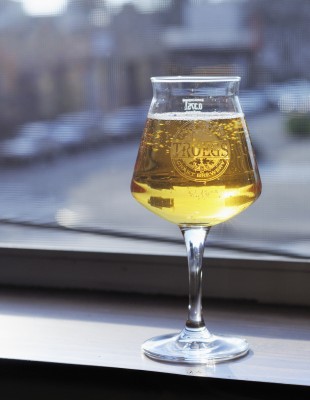 Bio Reactor – Culture A – Gen 1 – Recipe and Review
Bio Reactor – Culture A – Gen 1 – Recipe and Review
Specifications:
Size: 1.5 gal
Efficiency: 80%
Attenuation: 85%
Original Gravity: 1.054
Terminal Gravity: 1.008
Color: 3.95 SRM
Alcohol: 6.11% ABV
Bitterness: 0 IBU
Terminal pH: 2.86
Malt Bill:
2.25 lb (90.0%) Best Pilsner Malt
0.25 lb (10.0%) Briess Cara-Pils
Mash Profile:
158°F – 60m
Water Treatment:
Extremely Soft NYC Water
Added to mash: 2g Calcium Chloride
Hopping:
0.25 oz Aged Cascade Hops (0.0% AA) – 90m
Kettle Additions:
0.25 ea Whirlfloc Tablets (Irish moss) – added during boil, boiled 15m
0.25 tsp Wyeast Nutrient – added during boil, boiled 10m
Yeast:
Bio Reactor “Culture A”
Tasting Notes:
Judged as a BJCP 28B Mixed Fermentation Sour Beer
Aroma (9/12):
Quite fruity and tart on the nose with aromas reminiscent of sour cherry, berries, and perhaps a little tart apple. There is a fair amount of Brett funk on the nose—hay, leather, wet earth, and then some cinnamon-like spice with a touch of plastic-like phenol.
Appearance (2/3):
The beer paints a deep golden hue with crystal clarity. The beer pours with a nice, white foam, but quickly dissipates, likely due to lactobacillus’ ability to degrade foam positive proteins.
Flavor (13/20):
The beer leaves an initial impression of stark dryness and acidity though manages to balance with just a touch of residual malt sweetness. There is a low crackery malt character that is amplified by a hint of Cheerios-like THP. The beer has a tannic character that is reminiscent of apple skins. Most of the funk exhibited on the nose is subdued on the palate. The acidity is primarily lactic in nature, which is somewhat surprising considering the abundant amount of head space that was in the carboy during aging.
Mouthfeel (3/5):
The beer manages to feel crisp in spite of what is a fairly low level of carbonation. The acidity is soft and round not sharp or biting. A little bit more carbonation would be a welcome addition.
Overall Impression (6/10):
This is a very nice, refreshing sour beer with just enough funky Brett aromatics to keep it interesting. While blending is typical in sour beer production, this beer manages to remain somewhat balanced without any additional intervention.
Very Good (33/50)

